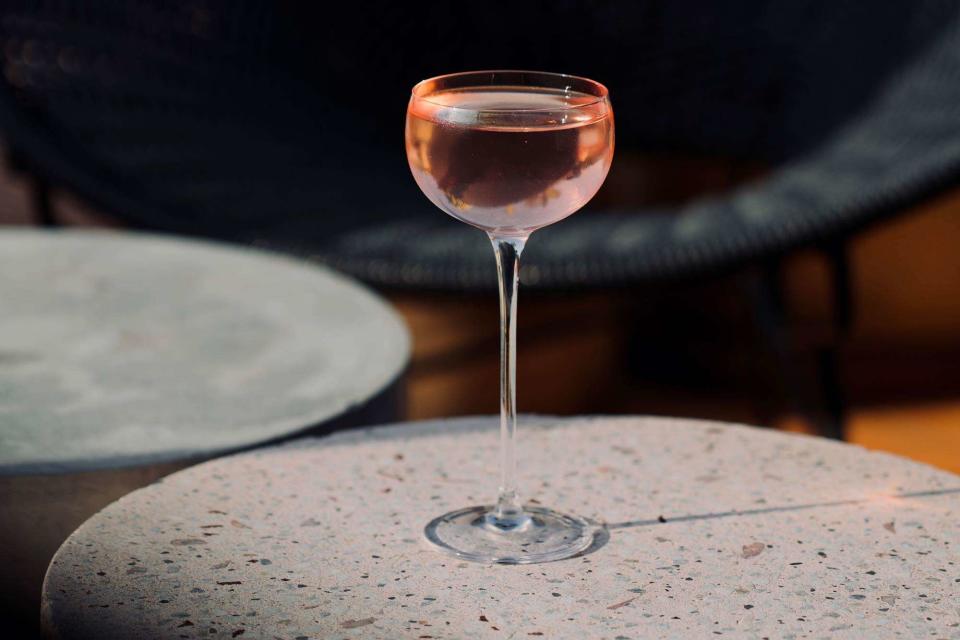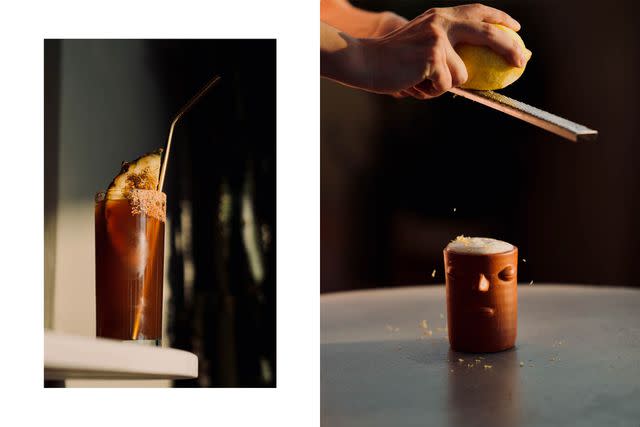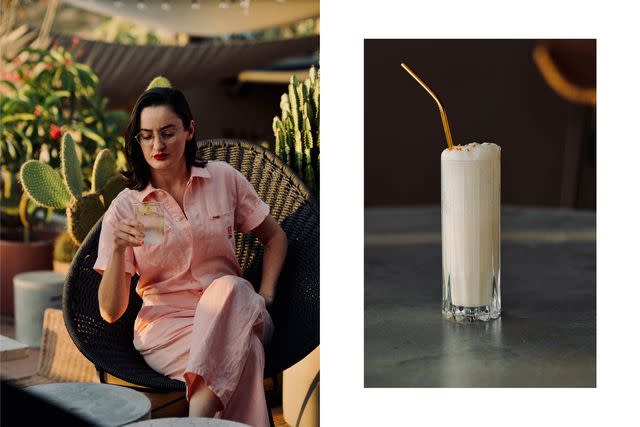This Must-visit Rooftop Bar in San Miguel de Allende Is Honoring Mexico's Heritage Cocktails — With Pre-Hispanic Ingredients and Ancestral Techniques
San Miguel de Allende's Bekeb is changing the city's drinks scene one ancestral cocktail at a time.

Courtesy of Bekeb
San Miguel de Allende has an undeniable charm. The Mexican city routinely ranks as one of the best cities in the world, according to Travel + Leisure readers and for good reason: it's rich in culture, walkable, and dotted with rooftops boasting views of the city's stunning architecture. Among these rooftops is world-class cocktail bar Bekeb.
On the terrace of the Casa Hoyos boutique hotel, which is in San Miguel de Allende's UNESCO historic district, the female-owned and -operated bar made the 50 Best Discovery list this year. It has some of the best cocktails in town, all by mixologist Fabiola Padilla.
Now, it's offering an entirely new concept: an ancestral menu that features 10 Mexican heritage drinks crafted with a modern twist. Each cocktail has an ancestral ingredient that is coupled with a Mexican spirit, and crafted with "techniques that our ancestors discovered," Padilla told T+L. She added that the key is "respecting the ancestral ingredients" while introducing contemporary flavors and an elegant presentation.

Bekeb
Take pulque. The drink, which dates as far back as 200 CE, is often called "the drink of the Gods" among locals, because it was reserved for the gods and their priests in the Aztec era. It became a widespread beverage in central Mexico after the Aztec empire fell and, under colonial rule, Spain outlawed it because it "violated Christian values," per the Journal of Ethnic Foods.
The drink is traditionally made from lightly fermented agave sap and is often described as having the consistency of kombucha. Padilla's adaptation, named Aguamiel, is made of pox, cacao liquor, fino sherry, coconut extract, cacao foam, and, of course, pulque.
She sources three types of pulque from her uncle's ranch and diligently waits for the perfect batch. "Fermentation depends a lot on the weather, sometimes two days are enough to get the notes I'm looking for in my cocktails, other times we wait four or five days," she said. (Fun fact: Padilla said a good pulque should smell like freshly baked bread.)
There's also tepache, a fermented Indigenous Mexican drink that also dates back to pre-Hispanic times — aka before Spain colonized Mexico. The earliest form of this drink was made by fermenting ground corn, but after Spanish colonizers introduced pineapples, a sweeter variation became more mainstream. "Tepache, as we know it now, is a drink that derives from the fermentation of the pineapple peel. It is generally sweetened with piloncillo and has a unique flavor due to the spices used in its preparation, like anise and cinnamon," Padilla said.
Her spin on the drink has spicy, mineral, and earthy flavors. Padilla's secret? She adds raicilla, an agave distillate with vegetal notes. (She mindfully chose a specific brand — Eterno Embrujo Raicilla — which is produced by women.)

Bekeb
Using pre-Hispanic ingredients has been part of Padilla's creative process since she opened Bekeb in 2019. "There is great variety and complexity in Mexican pre-Hispanic ingredients — we see them daily but many times we do not value them. For me, they have always been a treasure. Since I started my first menu, I have used ancestral and pre-Hispanic ingredients in my cocktails," she said. (Even the name "Bekeb" pays homage to Maya culture, as Bek is the word for "seed" in Tzotzil.)
"This time I wanted the entire menu to focus on that experience," she added. "Reinvent what we see as common, offering elegant creations, but based on ancestral drinks and Mexican distillates."
Padilla's process starts with inspiration from a flavor or aroma. She creates a "palette of flavors" and experiments until she finds the right mix. "That's what it's all about: having a balanced drink that satisfies all the senses, interesting presentation, aroma, and flavor," she said. Along the way, she makes sure to source seasonal ingredients, support local producers, and make sure the presentation is visually perfect — from the shape and size of the glassware down to the clarity of the ice.
Padilla's new menu offers something for visitors and locals alike. "I hope that our foreign guests can try ancestral Mexican drinks because many times they don't find them on their trip," she said. "And for our Mexican guests, I hope they remember our origins. All our current processes are based on what our ancestors taught us, they were the ones who began with fermentation, and then distillation. It is going back to our roots, to the origins of our culture."
For more Travel & Leisure news, make sure to sign up for our newsletter!
Read the original article on Travel & Leisure.

